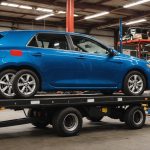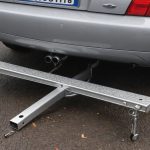Overview of Lift Kit Regulations in the UK
Lift kits are modifications designed to elevate a vehicle’s height, improving its off-road capability or aesthetic appeal. These modifications, however, fall under stringent UK vehicle modification laws to ensure both safety and compliance on the roads. It’s crucial for car owners to understand and adhere to these regulations to avoid potential legal repercussions.
UK vehicle modification laws serve several purposes: to maintain road safety, ensure minimal impact on other road users, and ensure vehicle stability and control. When fitting lift kits, one must consider the vehicle’s roadworthiness and compatibility with these regulations, making these modifications more than just an enhancement—they are legally significant.
In the same genre : Essential considerations for choosing the right windscreen replacement service in the uk
Key legal considerations include ensuring that any changes do not negatively affect the vehicle’s handling or stability. Furthermore, it’s essential to understand that any modifications must not obscure the driver’s view or disrupt the function of vehicle lights and other essential components. Failing to adhere to these regulations can lead to the vehicle being deemed unfit for the road, hence compliance is paramount. Always consulting with a professional or referring to formal government guidelines can guide safe and lawful modification practices.
Relevant UK Laws Governing Vehicle Modifications
Understanding the legal landscape of UK vehicle modification laws is essential for anyone considering a vehicle modification like a lift kit. In the UK, the Vehicle Standards Agency (VSA) plays a significant role in ensuring vehicles meet the required standards outlined by law.
Topic to read : Revitalize your classic uk car: the complete restoration blueprint for leather seats
Road Traffic Act and Its Impact on Modifications
The Road Traffic Act is a crucial piece of legislation that impacts vehicle modifications. It mandates that all vehicles, including those with lift kits, must be roadworthy and safe to be driven. The act ensures that modifications don’t negatively affect a vehicle’s ability to maintain control, especially under emergency conditions.
Construction and Use Regulations
The Construction and Use Regulations provide specific guidelines on how vehicles should be modified. These regulations cover various aspects, such as the permissible height adjustments and structural changes, to ensure that modifications don’t impair safety or visibility.
Role of the DVLA
The DVLA (Driver and Vehicle Licensing Agency) oversees the registration and documentation of vehicles with modifications. It is important to inform the DVLA about any modifications like lift kits to maintain complete transparency. This step helps avoid potential legal issues and ensures compliance with all UK vehicle modification laws.
Safety Standards for Lift Kit Installation
Understanding safety standards is critical when considering a lift kit installation. These standards ensure that the modification enhances a vehicle’s function without compromising safety. There are several key safety requirements to observe during lift kit installation. First, it’s essential to verify that the lift kit is compatible with the vehicle’s make and model. Each vehicle has specific specifications, and using a kit not designed for your vehicle could lead to stability issues or mechanical failure.
Next, adherence to manufacturer guidelines for installation processes is crucial. These guidelines often include detailed instructions to ensure correct fitment and prevent potential hazards. Safety assessments provide assurance that the vehicle maintains safe operation post-modification. This could involve inspections by a certified mechanic or obtaining specific certifications that verify correct installation.
It’s also vital to periodically check all lift kit components, such as bolts and joints, to ensure they remain securely in place. This regular maintenance helps in prolonging the lifespan of the lift kit and maintaining vehicle safety. Emphasizing safety throughout the installation process protects both the vehicle and its occupants.
Installation Procedures for Lift Kits
Lift kit installation procedures are essential to ensure your vehicle’s modification is safe and compliant with regulations. Following the right installation guidelines helps in achieving an optimal fit and safe driving experience.
Step-by-Step Installation Process
-
Preparation: Begin by thoroughly reviewing the manufacturer’s instructions and ensuring you have the correct lift kit for your vehicle model.
-
Lifting the Vehicle: Secure your vehicle with jack stands and ensure it is stable before starting the lift kit installation.
-
Component Removal: Carefully remove the tires, shocks, and any other parts that may interfere with the installation.
-
Installing the Lift Kit: Follow detailed instructions for fitting the lift components, ensuring all parts are aligned and securely fastened.
-
Reassembly: Reattach the tires and any components removed earlier. Ensure that every part is tightened correctly before lowering the vehicle.
Tools Required for Installation
Having the right tools is crucial, including:
- Sockets and wrenches
- Jack stands
- Torque wrench
Professional Installation vs. DIY
Opting for professional installation guarantees expertise and reduces risk, while DIY installation can save costs but demands precision and adequate skill. Evaluate your confidence and tools before deciding.
Consequences of Illegal Modifications
Illegal vehicle modifications carry significant consequences that every vehicle owner should be aware of. The potential penalties and fines for non-compliance with UK vehicle modification laws can be severe and may include hefty fines or even lead to the vehicle being declared unroadworthy. Non-compliance can significantly impact vehicle ownership, potentially resulting in the seizure of the vehicle or revocation of the registration.
Beyond financial penalties, there are substantial risks associated with illegal modifications. These can compromise the safety and performance of the vehicle, leading to dangerous situations on the road. Furthermore, making illegal changes can void vehicle warranties, leading to additional personal and financial risk for the owner.
Vehicle compliance also affects insurance; unapproved modifications can result in claims being denied, leaving owners unprotected in the event of an accident. Keeping your vehicle within the boundaries of legal requirements helps ensure the safety of all road users and safeguards your investment in your vehicle. Always ensure modifications are legal and documented, and seek professional guidance when in doubt to avoid these detrimental outcomes.
Insurance Implications of Lift Kit Modifications
When considering lift kit modifications, it’s crucial to understand the insurance implications. Informing your insurance company about any modifications is essential to ensure your policy remains valid. Many insurers view lift kits as significant alterations that could affect the vehicle’s performance and, therefore, its risk profile.
Reporting Modifications to Insurance Companies
Failing to report modifications like lift kits can lead to severe consequences. Insurance companies require all changes to be disclosed to accurately assess risk and adjust the terms of your coverage accordingly. If modifications are not reported, it might result in denied claims, leaving you financially exposed in case of accidents.
Coverage Adjustments
Once modifications are reported, insurers may need to adjust your policy. This could involve increasing your premiums due to the perceived increased risk or altering the coverage terms. It’s a good idea to contact your insurer in advance, even before beginning the installation, to understand potential changes to your insurance policy.
Consequences of Non-Disclosure
Not disclosing a lift kit installation can have serious repercussions. Undisclosed modifications might lead to the insurance policy being voided, and any claims made could be denied. Keeping an open line of communication with your insurer ensures that you’re always protected.
Required Documentation for Compliance
When installing a lift kit, ensuring legal compliance through compliance documentation is crucial. Vehicle modification paperwork serves as a record of all changes made to your vehicle, aligning with UK vehicle modification laws.
To start, obtain a certificate of installation from a professional installer. This document demonstrates that the lift kit was installed following safety standards. You should also keep maintenance records, proving that regular checks and necessary repairs adhere to safety requirements. Next, inform the DVLA of your modification. Notify them in writing, detailing the nature of the modification, to maintain transparency and uphold vehicle registration integrity.
Keeping detailed records aids in insurance compliance. If a lift kit is declared to your insurer, maintain copies of all related communication. This evidence can facilitate smooth claims processing and help avoid complications.
To obtain necessary documentation, consult with mechanics or dealerships familiar with vehicle modifications. They can guide you through acquiring the right paperwork for legal compliance. Being diligent with documentation supports responsible vehicle ownership and protects against potential legal challenges.
Practical Tips and FAQs
Lift kits are a popular modification among vehicle enthusiasts, primarily for enhancing off-road performance or aesthetic appeal. However, navigating the realm of these modifications effectively can be tricky. Here are some practical tips and frequently asked questions that can help in this process.
Practical Tips for Lift Kits
- Research Thoroughly: Before choosing a lift kit, evaluate the vehicle’s compatibility to ensure it meets the intended purpose without compromising safety standards.
- Professional Advice: Consulting with a certified mechanic or expert is invaluable. They can provide insights into the best lift kits suited for specific vehicle models and ensure legal compliance with UK vehicle modification laws.
- Regular Maintenance: Post-installation, conduct frequent checks on the lift kit and related components to maintain vehicle stability and performance.
Lift Kit FAQs
- Do lift kits impact insurance? Yes, lift kits can affect insurance policies. It’s crucial to notify insurers to avoid policy voidance.
- What documents are required for compliance? Documents like installation certificates, maintenance records, and DVLA notifications are essential for vehicle modification paperwork.
- Can I install a lift kit myself? While possible, DIY installations require significant skill and adherence to installation guidelines to avoid potential consequences of illegal modifications.






